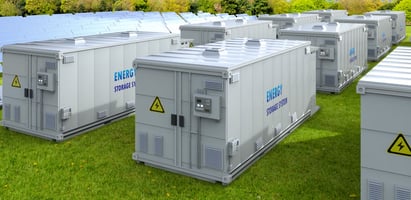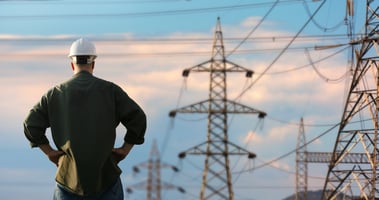A New Benchmark in Energy Storage
Maximizing Renewable Energy: How DERMS Enhance Grid Resilience and Reliability
As the world accelerates its transition to renewable energy sources, integrating Distributed Energy Resources (DERs) into the grid has become a top priority for utilities and grid operators. However, this transition brings challenges, including the need for effective management solutions to ensure grid reliability and resilience. In this blog, we'll explore the critical role that Distributed Energy Resource Management Systems (DERMS) play in enhancing the reliability and resilience of the grid, particularly in the context of renewable energy integration.
The Renewable Energy Revolution
Renewable energy sources, such as solar and wind power, have experienced rapid growth and adoption in recent years. Their environmental benefits, government incentives, and public demand have driven the expansion of renewable energy installations. However, renewable energy generation is inherently variable and intermittent, depending on factors like sunlight and wind speed.
This variability poses a significant challenge to grid operators as maintaining a stable and reliable power supply becomes more complex. As renewable energy penetration increases, so does the need for innovative solutions to address these challenges.
The Role of DERMS
Distributed Energy Resource Management Systems (DERMS) have emerged as powerful tools in the quest to maximize the potential of renewable energy while ensuring grid reliability. Here's how DERMS enhances grid resilience and reliability:
- Real-Time Monitoring: DERMS continuously monitors the status and performance of DERs, including solar panels, wind turbines, battery storage, and more. Real-time data collection gives grid operators a clear picture of the grid's condition.
- Dynamic Control: DERMS provides the capability to control and optimize the operation of DERs in real time. This active control ensures that renewable energy generation is synchronized with grid demand, reducing the risk of fluctuations and outages.
- Grid Stability: By managing the interactions between DERs and the grid, DERMS contributes to overall grid stability. They can mitigate voltage fluctuations, frequency deviations, and other disturbances caused by intermittent renewable generation.
- Resilience Against Intermittency: DERMS enables utilities to address the intermittency of renewable sources effectively. They can store excess energy during periods of high generation and release it when needed, acting as a buffer against unpredictable fluctuations.
- Predictive Analytics: Many DERMS incorporate advanced forecasting and predictive analytics. These tools can anticipate changes in renewable energy generation and adjust DER operation accordingly, minimizing disruptions.
- Integration with Demand Response: DERMS can coordinate with demand response programs, incentivizing consumers to reduce or shift their energy usage during peak demand periods. This demand-side management enhances grid resilience by reducing stress during high-demand hours.
- Grid Restoration: In the event of an outage or disruption, DERMS can aid in grid restoration efforts by orchestrating the reconnection of DERs and ensuring a smoother recovery process.
DERMS and Renewable Energy Integration
Integrating renewable energy sources into the grid is essential for reducing carbon emissions and achieving sustainability goals. However, this transition requires careful planning and management. DERMS play a pivotal role in this process by:
- Supporting Decentralized Generation: DERMS facilitates the seamless integration of decentralized renewable energy sources into the grid, including residential solar panels and small wind turbines.
- Managing Grid Congestion: In regions with high renewable energy penetration, grid congestion can become challenging. DERMS help alleviate congestion by optimizing the use of DERs and reducing strain on transmission lines.
- Enabling Renewable Energy Forecasting: Accurate forecasting of renewable energy generation is crucial for grid stability. DERMS enhances forecasting accuracy, allowing utilities to plan for varying levels of renewable energy input.
- Enhancing Grid Flexibility: DERMS allows grid operators to adapt to changing conditions. They can respond quickly to fluctuations in renewable energy generation, maintaining a reliable power supply.
Conclusion
The future of renewable energy integration relies heavily on the effectiveness of DERMS. These systems empower grid operators to harness the full potential of renewable energy while ensuring grid reliability and resilience. As renewable energy continues transforming the landscape, DERMS will play an increasingly vital role in maximizing renewable generation, reducing carbon emissions, and creating a more sustainable and resilient energy future.

.jpg?height=200&name=iStock-1450272068%20(1).jpg)
